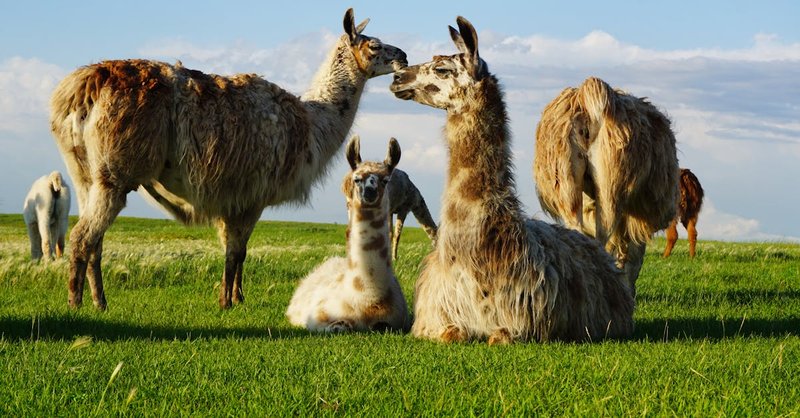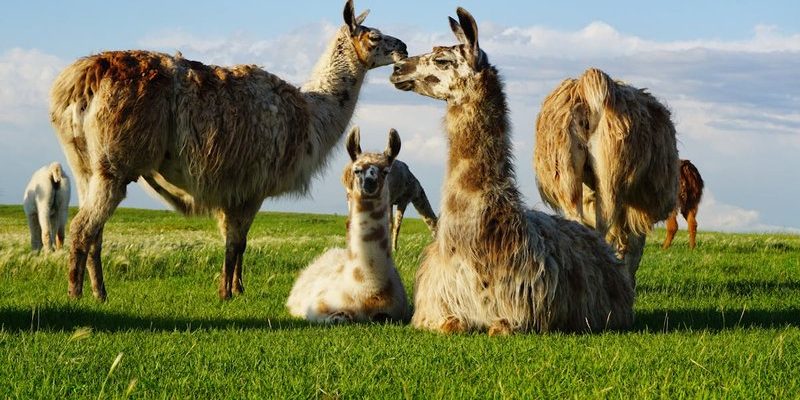
If you’re new to llamas, it’s essential to know that these social creatures require more than just grass and a roof over their heads. You’ll want to think about safety, comfort, and the right type of fencing. Honestly, it can feel a bit overwhelming at first. But I promise, with a bit of guidance, setting up a shelter and pasture for llamas can be a rewarding project. Let’s dive into how to create a space that your llamas will love!
Choosing the Right Location for Your Llama Shelter
The first step in setting up a shelter for llamas is picking the right location. You want a spot that’s dry, well-drained, and away from strong winds. Think of it like choosing a cozy nook on a rainy day; you wouldn’t want it to be too damp or chilly. Ideally, the shelter should be near a source of fresh water and easily accessible for you.
Consider how much sunlight the area gets too. Llamas enjoy the sun, but they also need shade to escape the heat during the summer months. A nice balance is key. You might want to look for natural shade from trees or consider placing a shelter near them, so your llamas can cool off when they need to.
Another crucial factor is the ground itself. Ensure the land is flat or gently sloping, which helps with drainage. You wouldn’t want standing water or muddy patches where your llamas could slip or get stuck.
Designing the Shelter for Your Llamas
Once you’ve selected a great location, it’s time to design the shelter. The design doesn’t have to be fancy; a simple structure that offers protection from rain, snow, and wind will do. You might be wondering, “How big should it be?” A general rule is to allow about 50 square feet per llama. This gives them plenty of space to move around comfortably.
The shelter should have a roof to keep them dry and walls to protect against drafts. Many people opt for a three-sided shelter, allowing llamas to enter from one side and exit easily. This way, they can enjoy freedom while still having a safe place to retreat.
You’ll also want to include some bedding inside. Straw or wood shavings work great as they’re absorbent and comfy. Fresh bedding not only helps with cleanliness but makes the space more inviting for your llamas.
Fencing: Keeping Your Llamas Safe
Good fencing is essential in keeping your llamas safe. They’re curious creatures and can sometimes be a bit escape-prone. A sturdy, tall fence is the best choice. Ideally, you should aim for a fence that’s at least 5 to 6 feet high. This will deter them from jumping out or wandering off.
There are various fencing materials available, such as wood, wire, or vinyl, but whichever you choose, make sure it’s strong and durable. Adding barbed wire at the top can also help if you’re in an area where wildlife may pose a threat.
You might be tempted to use electric fencing, but be cautious. Llamas are generally not fond of shocks, and training them to respect an electric fence can be tricky. A solid, straightforward fence is often the best route.
Creating a Pasture for Your Llamas
Now that your shelter is ready, let’s talk about the pasture area. Llamas thrive in grassy environments, so ample pasture space is essential. Aim for at least 200 square feet of grazing area per llama. This space allows them to roam, graze, and play.
You’ll also want to incorporate a variety of grasses and plants. Keep in mind that llamas are herbivores and love to munch on grass, hay, and certain leaves. You can also sprinkle in some safe herbs to keep things interesting. Just make sure everything they have access to is non-toxic.
It’s a great idea to rotate your llamas through different pastures, if possible. This gives the grass time to recover and prevents overgrazing. Think of it as giving them the chance to explore different backyards; they’ll appreciate the change of scenery!
Water Sources and Feeding Zones
Llamas need access to clean, fresh water at all times. A trough or bowl that they can easily reach is a must-have. Check the water daily to ensure it’s clean and filled. You wouldn’t want to sip from a dirty cup, right? Keeping their water source clean helps maintain their health.
As for feeding zones, create a designated area where you can provide hay or grain. A simple trough works well, but make sure it’s sturdy enough to withstand some playful llamas. Having a dedicated feeding area minimizes mess and allows you to monitor how much they’re eating.
And remember, don’t overfeed! Llamas are pretty good at regulating their own intake, so keep an eye on their weight and adjust their feed accordingly. It’s all about keeping them happy and healthy.
Maintenance for Your Llama Shelter and Pasture
Now that you have your shelter and pasture set up, regular maintenance is key to keeping everything in tip-top shape. Just like any living space, your llamas’ home requires attention. Clean the shelter often, removing waste and replacing bedding to keep it fresh.
In the pasture, check the fencing for any damage regularly. Llamas can be a bit rambunctious, and minor repairs can prevent bigger issues later. Make sure the area is free of sharp objects and any harmful plants to keep your llamas safe.
During the colder months, you’ll need to provide extra bedding for warmth and ensure that their water doesn’t freeze. Regularly checking on your llamas will help you spot any health issues early, so pay attention to their behavior and overall condition.
Final Thoughts on Llama Care
Setting up a shelter and pasture for llamas isn’t just about creating an environment; it’s about crafting a safe haven for these gentle giants. By focusing on their needs—from a cozy space to roam and graze to ensuring they have clean water—you’re setting them up for a happy, healthy life. It may feel like a lot of work at first, but trust me, the joy of watching your llamas thrive will make it all worth it.
Remember, the key is to create a safe, comfortable space where they can be themselves. With time, patience, and a little effort, you’ll be on your way to being an excellent llama caregiver!

